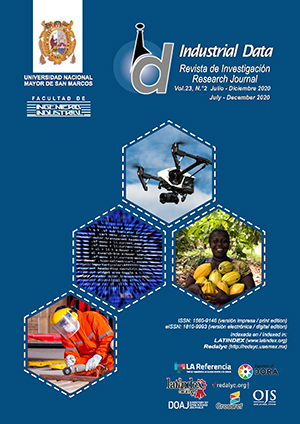R-IEDs Technology for NCRE, Telework and Environmental Impact Mitigation
DOI:
https://doi.org/10.15381/idata.v23i2.18633Keywords:
FPGA-IEDs, Tele-Work in NCRE Virtual Centrals, Industry 4.0, mobile distributed monitoring system MDMS, Technologies for Environmental Impact Mitigation TEIMAbstract
In this research, a mathematical model was developed for the application of R-IEDs technology on FPGAs in configurable power systems, aimed at supporting renewable energies, teleworking and mitigating environmental impact. The scheme is oriented to the design of regenerative systems, with cycles of reuse, recycling, dynamic reconfiguration and feedback of by-products or energy, in correspondence with the circular model. The proposed method is based on a study of environmental impact factors and technological alternatives, for the design and configuration of intelligent electronic devices, in a distributed scheme, based on FPGA for dynamic updating. Among the results is the technological proposal developed for the integration of renewable energies, through remote activities in the energy sector, waste heat recovery and fractal simplification based on scalable models. This allows us to conclude on the high flexibility and efficiency of the model by applying technological tools aimed at mitigating the environmental impact and sustainable engineering.
Downloads
Downloads
Published
Issue
Section
License
Copyright (c) 2020 Cecilia E. Sandoval-Ruiz

This work is licensed under a Creative Commons Attribution-NonCommercial-ShareAlike 4.0 International License.
AUTHORS RETAIN THEIR RIGHTS:
a. Authors retain their trade mark rights and patent, and also on any process or procedure described in the article.
b. Authors retain their right to share, copy, distribute, perform and publicly communicate their article (eg, to place their article in an institutional repository or publish it in a book), with an acknowledgment of its initial publication in the INDUSTRIAL DATA.
c. Authors retain theirs right to make a subsequent publication of their work, to use the article or any part thereof (eg a compilation of his papers, lecture notes, thesis, or a book), always indicating the source of publication (the originator of the work, journal, volume, number and date).






